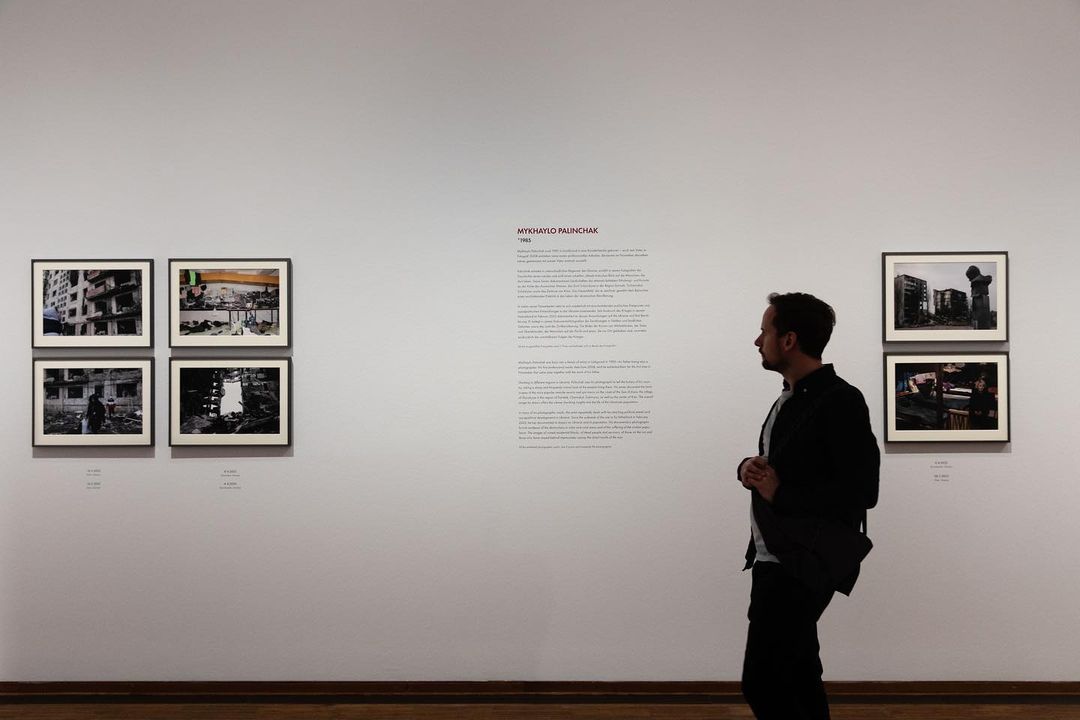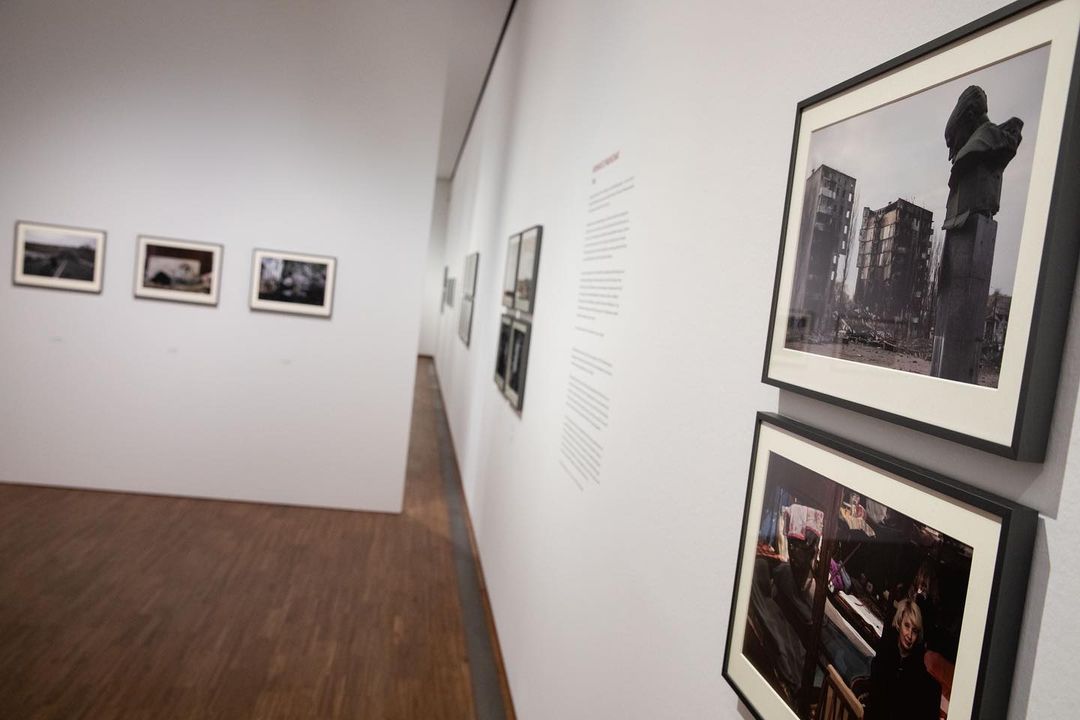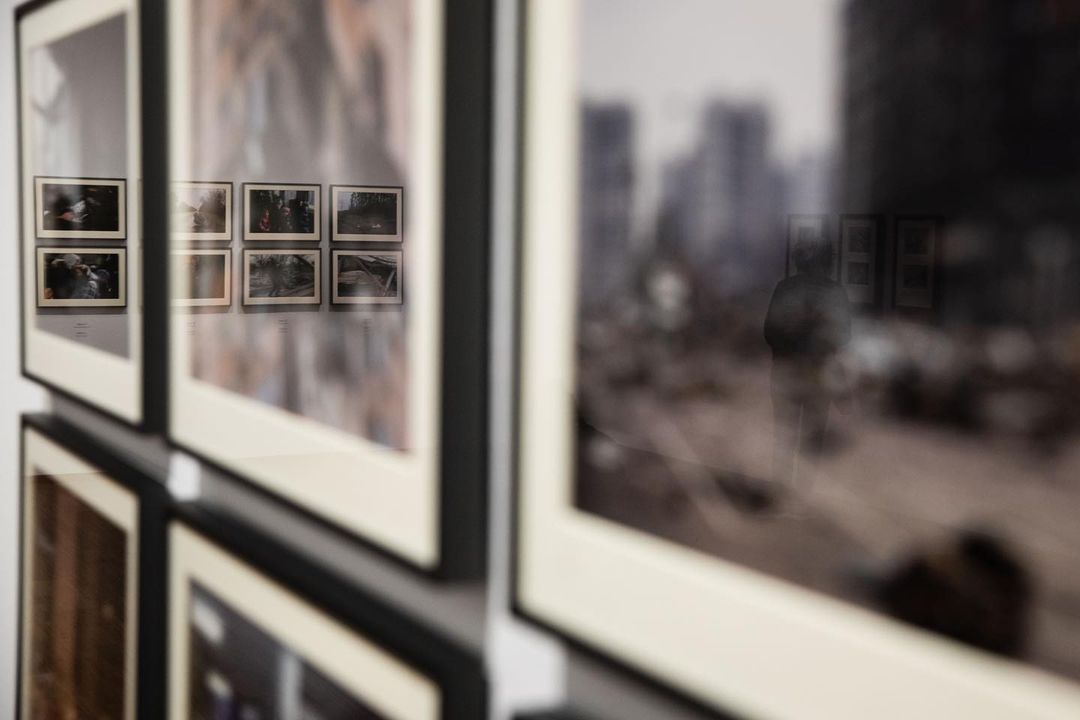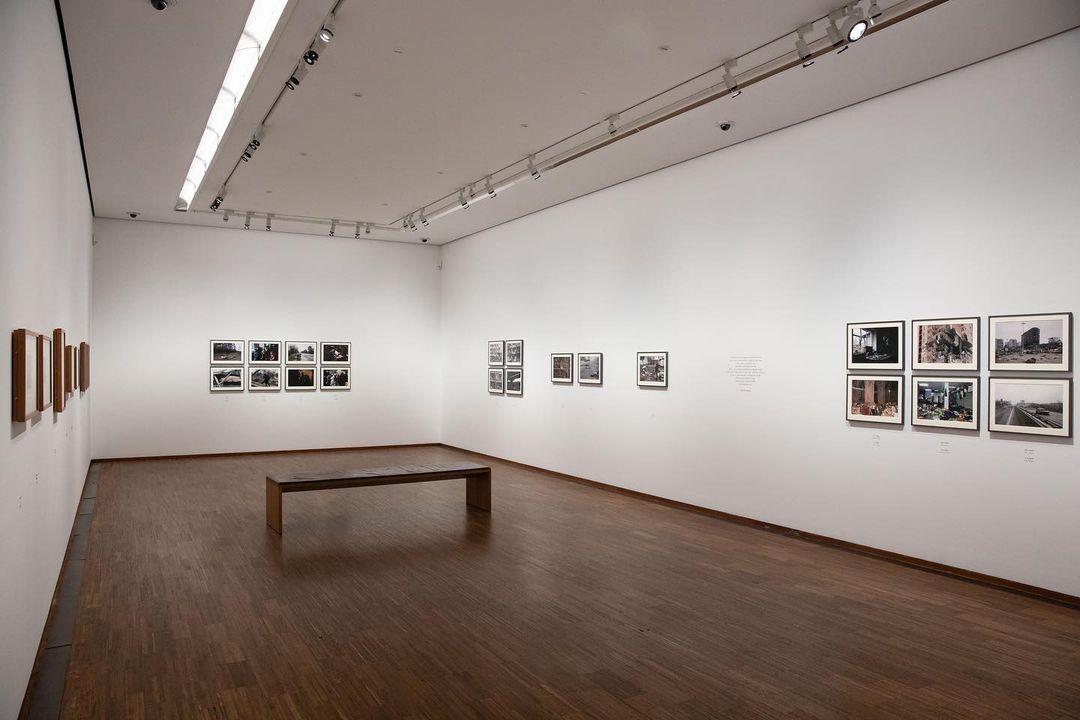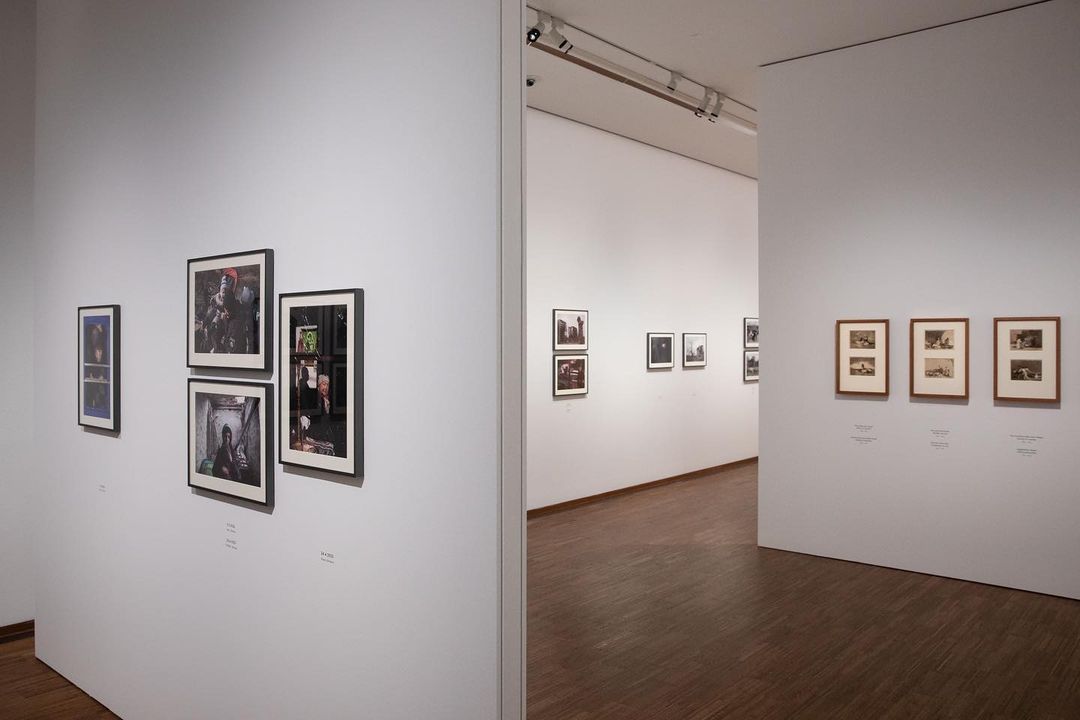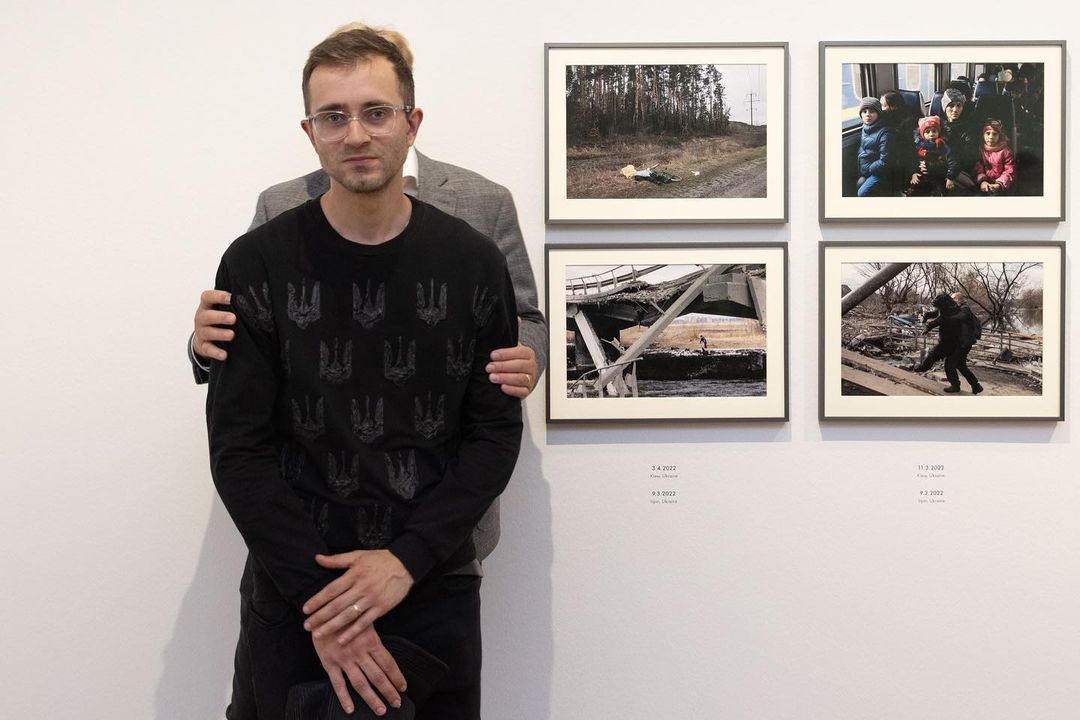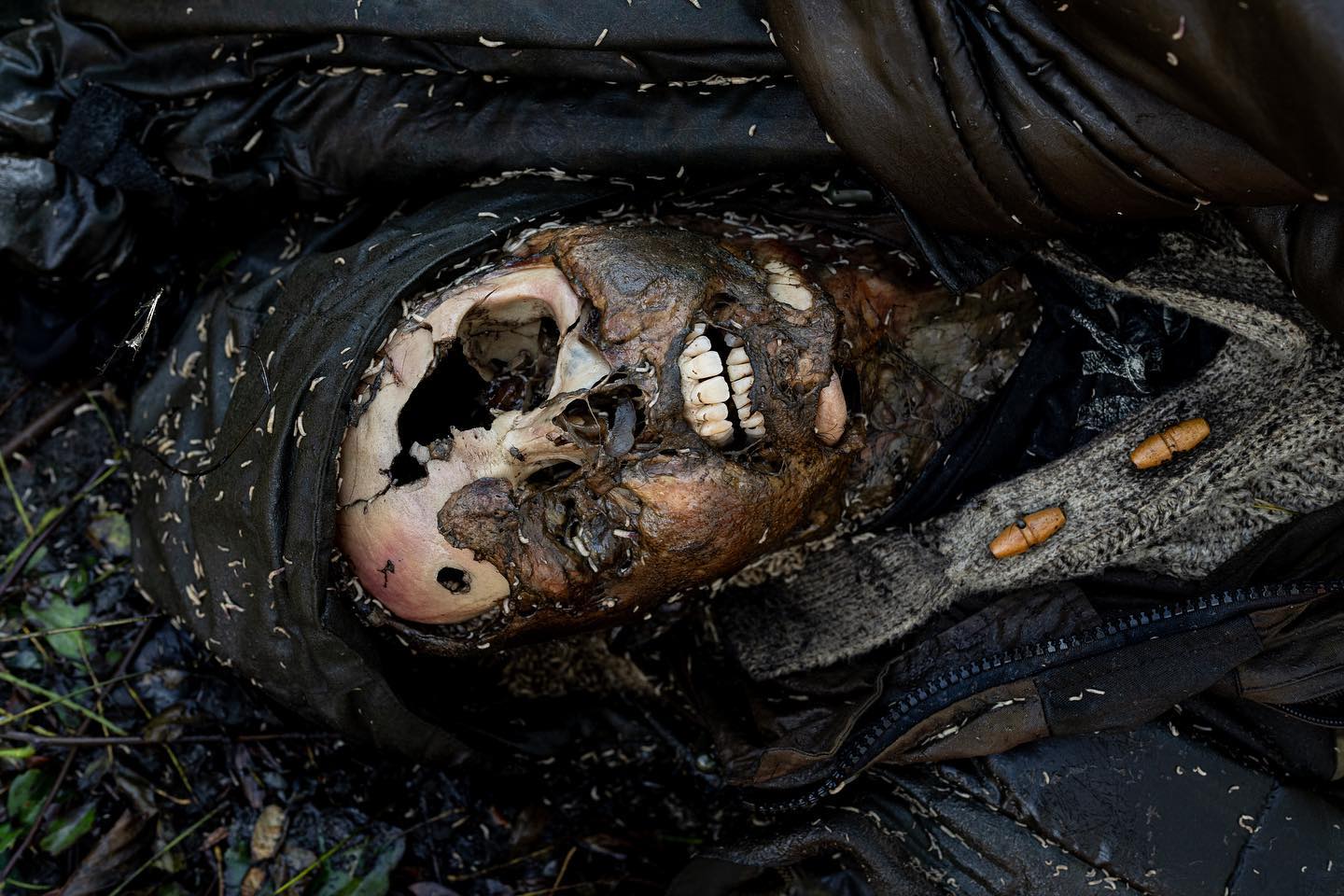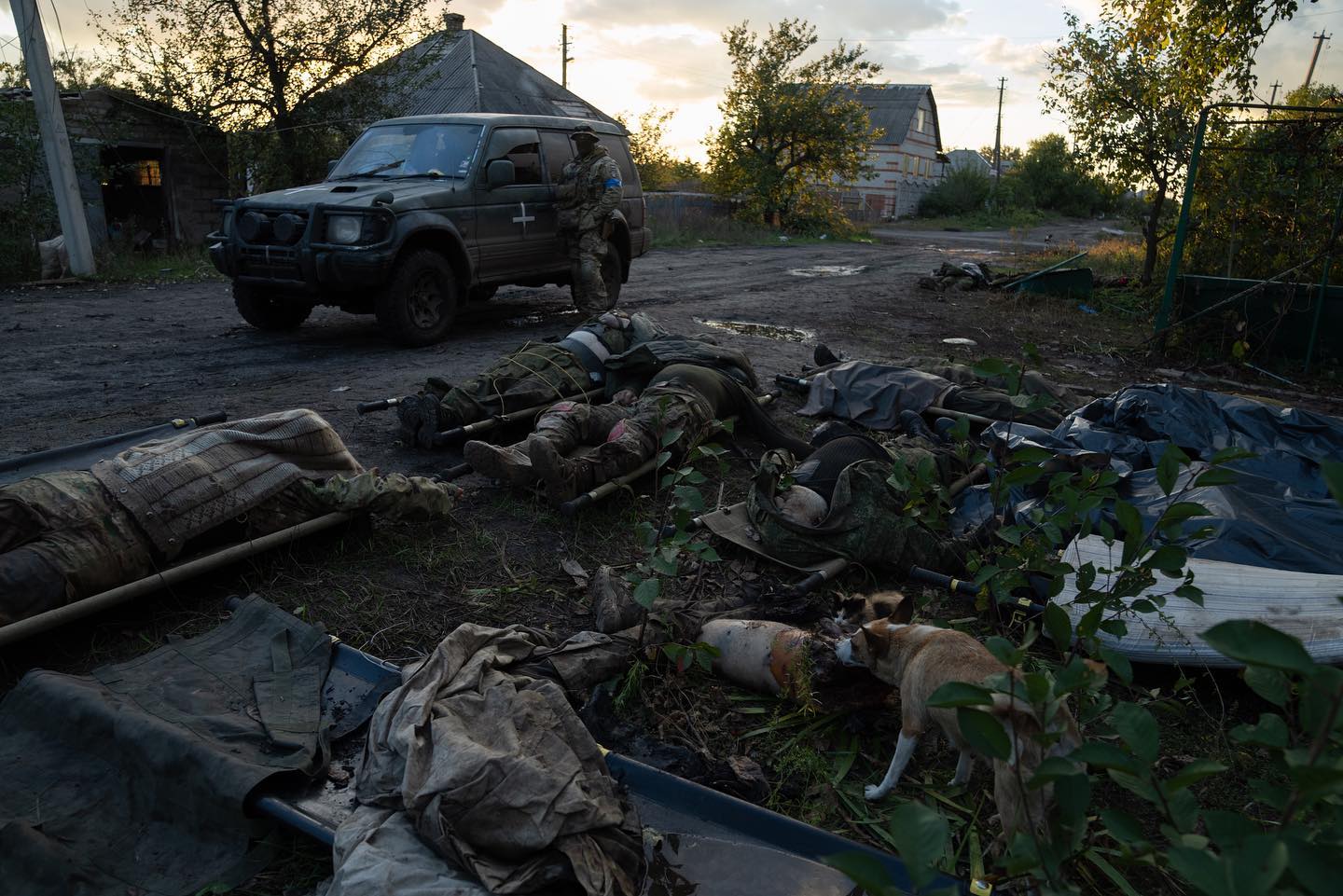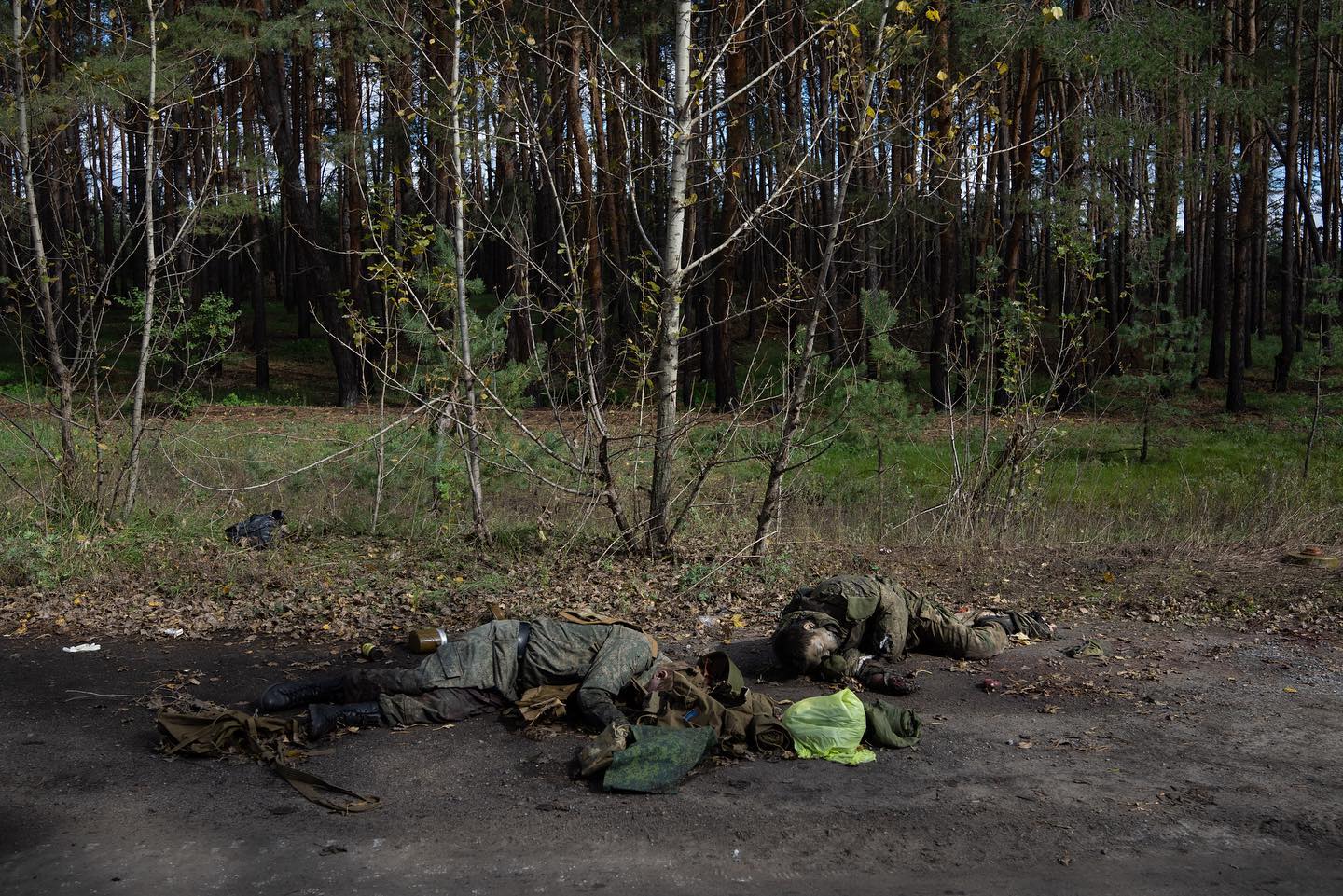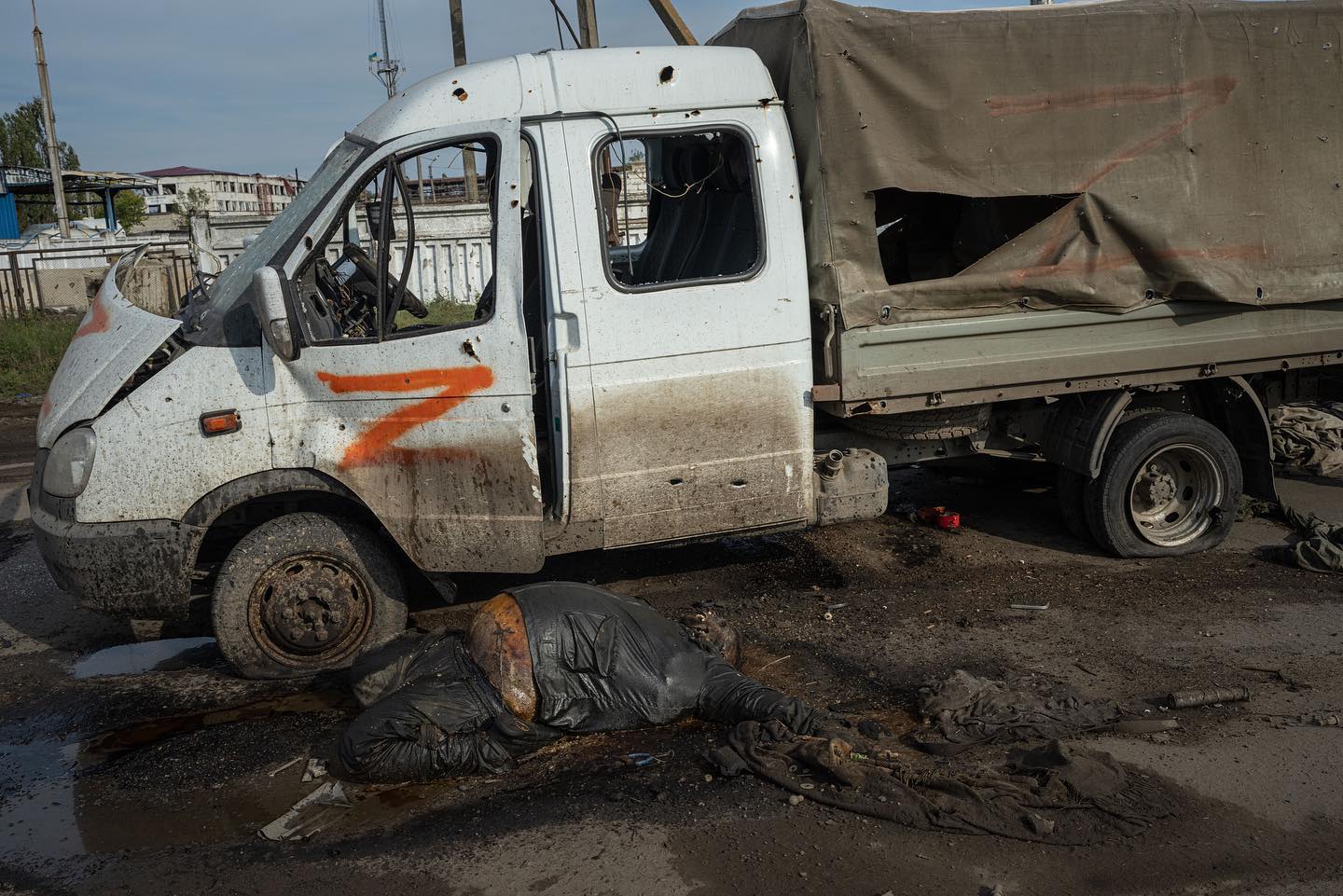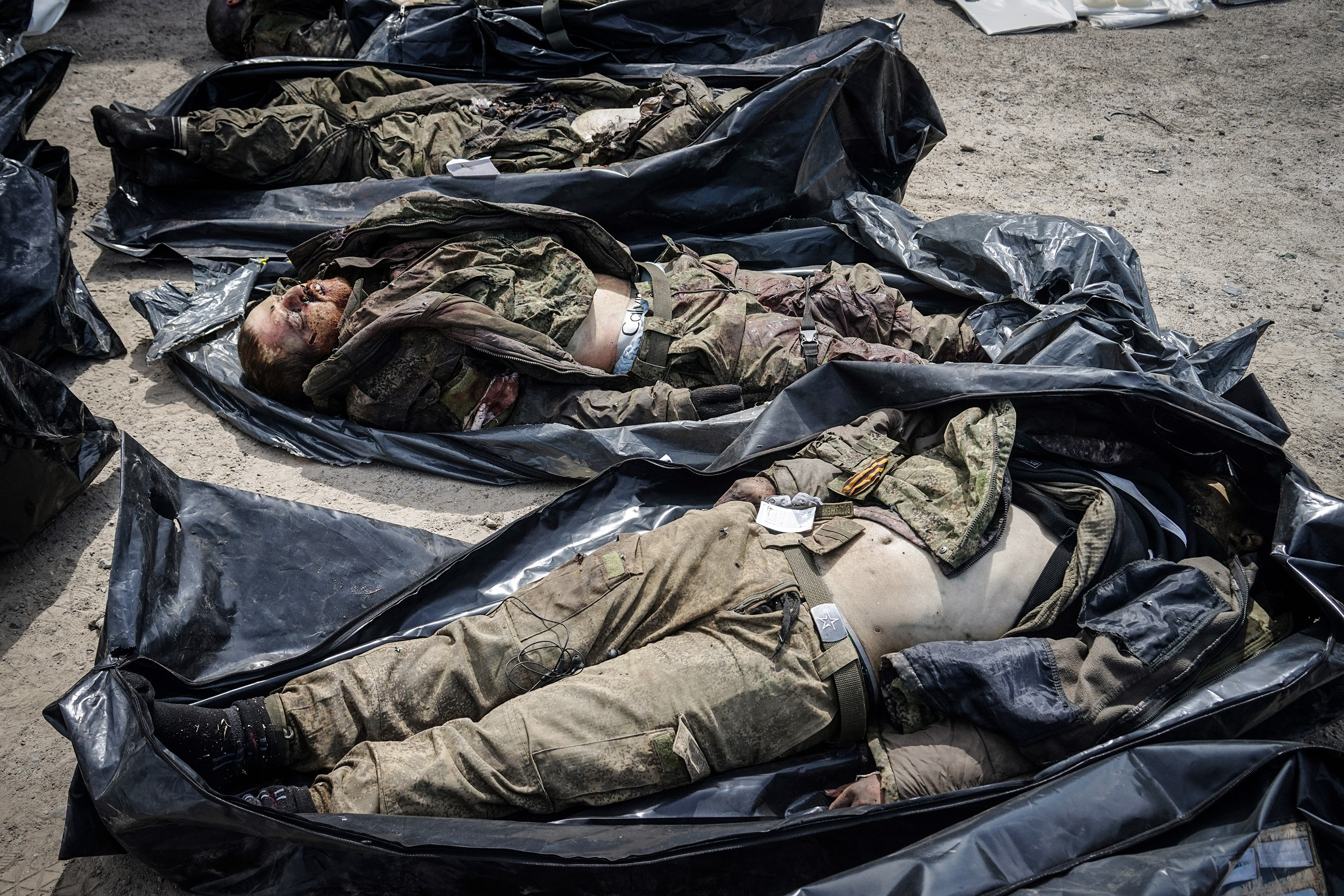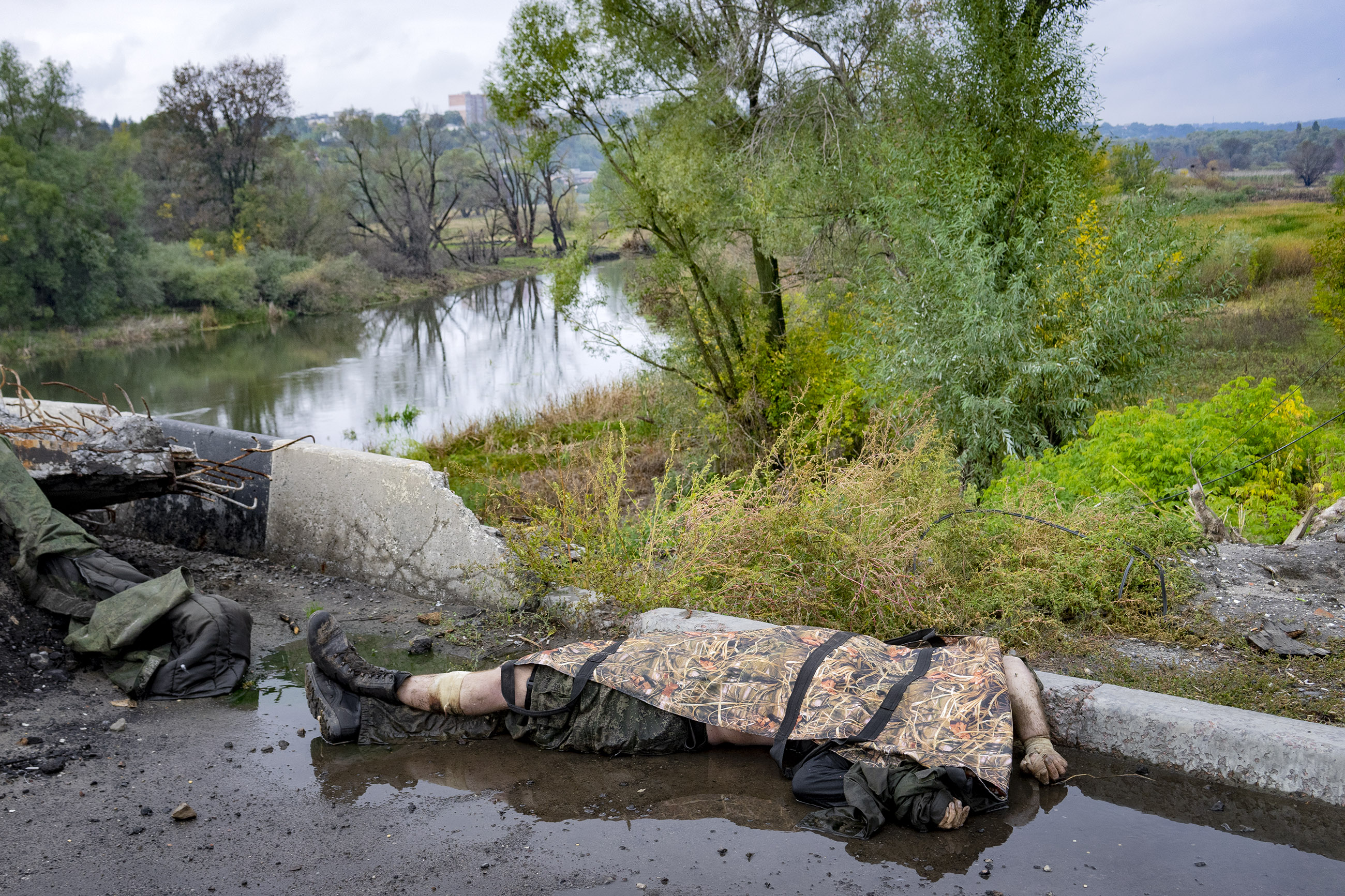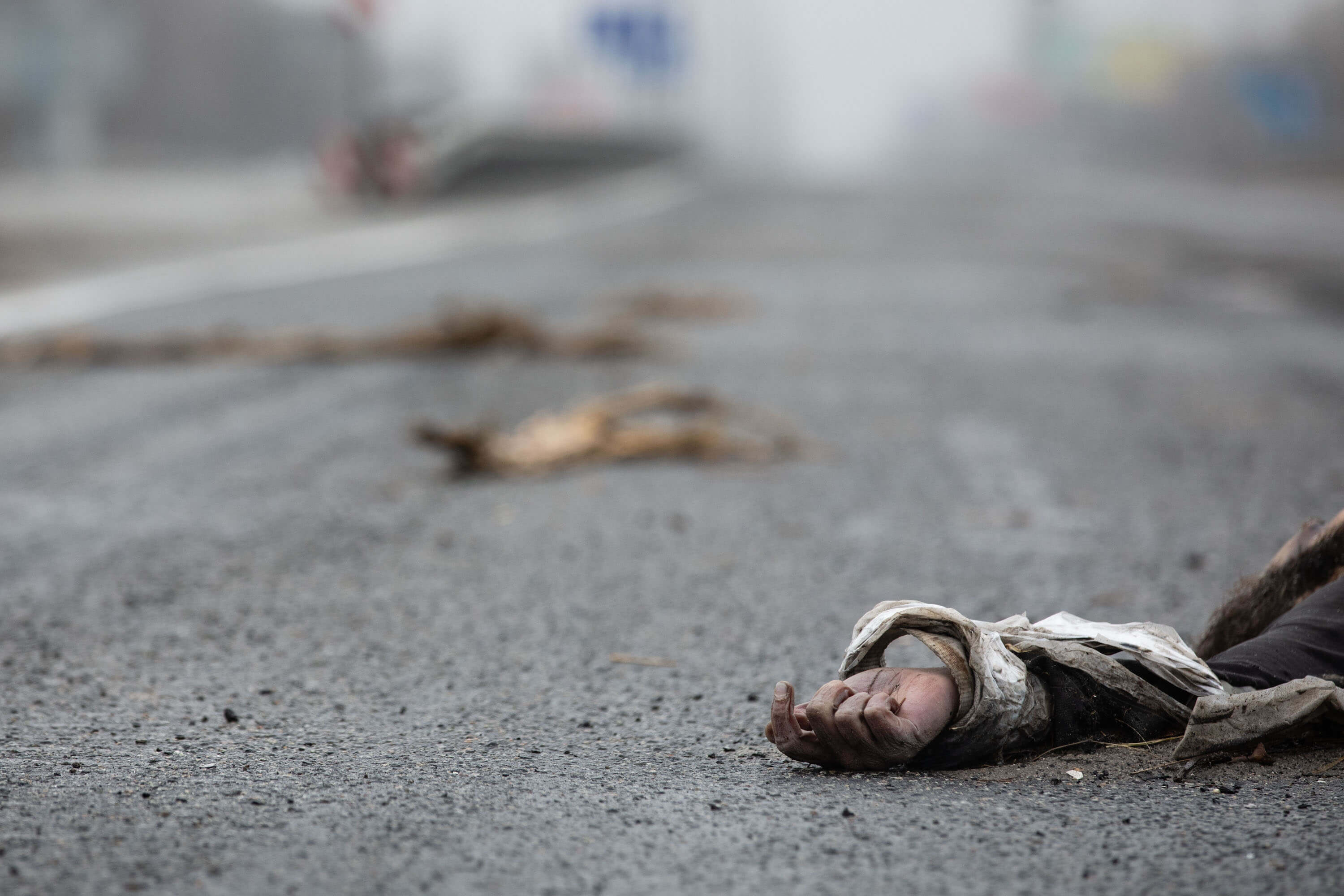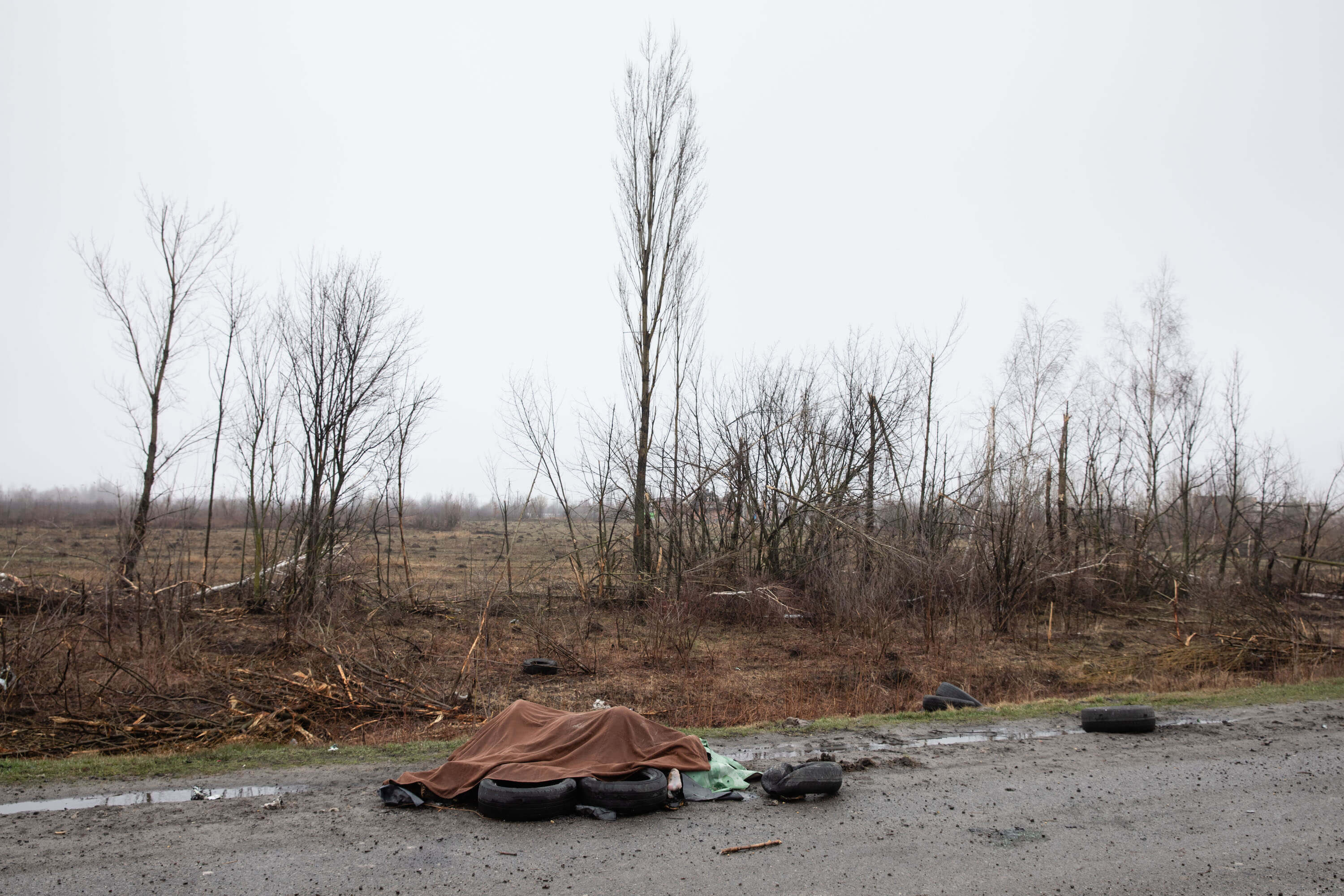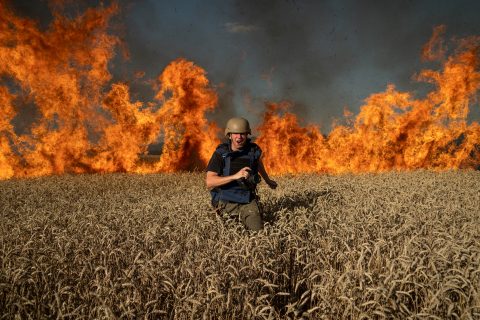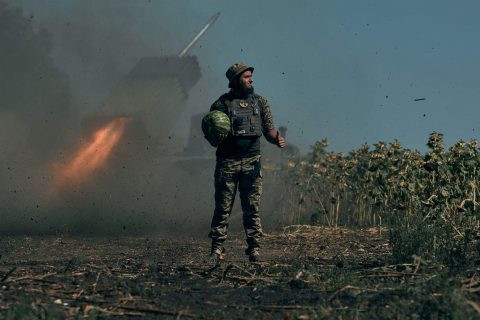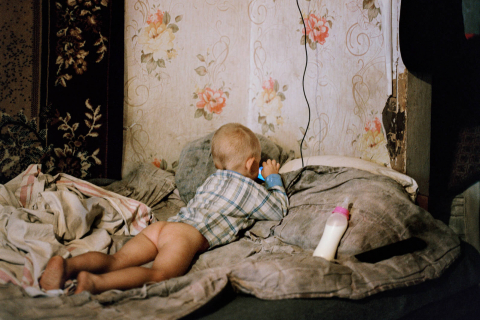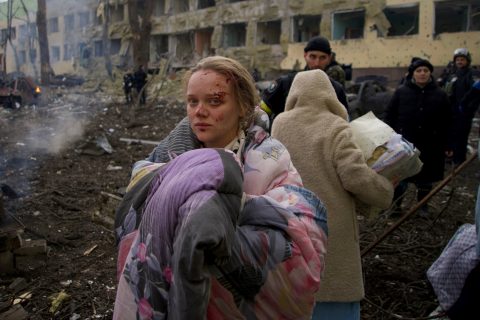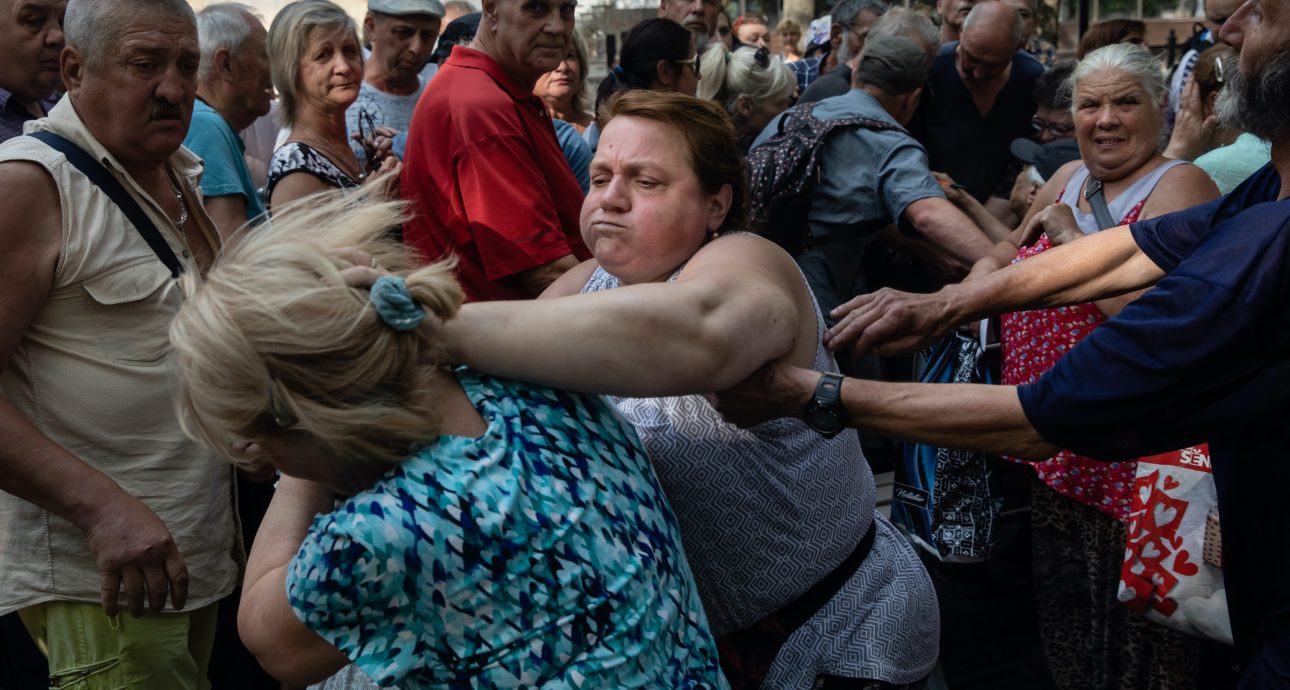
‘Photographs Don’t Lie. It’s Their Authors Who Do’: Ukrainian Photographers on Censorship and Taboos During the War
Ukrainian Warchive, an online archive of photographs documenting Russia’s war against Ukraine, joined forces with Bird in Flight to hold the online discussion titled ‘Why show that? How photographers cope with self-censorship during the war’.
Participating in the round table were freelance photographer Mykhailo Palinchak, Associated Press photographer Evgeny Maloletka, Zaborona’s photographer/photo editor Ivan Chernichkin, and the publication’s editor-in-chief Katerina Sergatskova. The discussion was moderated by art scholar Kateryna Mishchenko.
Bird in Flight publishes the abridged transcript of the conversation. The participants discussed their taboos in photography and the differences in Ukrainian and European photographers’ views on the war. Also, they talked about the pictures they made public despite the potential castigation.
Kateryna Mishchenko: From the Fog of War: Ukraine Today, a book I contributed to, is set to be released in Germany soon. The book features a series of texts and a small visual part, which Yurii Hrytsyna worked on. He suggested putting on the book cover Oksana Karpovych’s shot from Bucha. The picture shows a street in which a dead person is lying. The body is shown in a very low-key manner — you can’t even see the face. However, German publishers flatly refused to have a cover like that. While they admitted the photo was compelling, they insisted nobody would buy the book. It got me thinking, can we now sacrifice the realism of our coverage in favour of marketing? As photographers, how do you build your strategy in this regard? Do you restrain yourself?
Mykhailo Palinchak: National cultures vary by country. For instance, potentially shocking imagery is often censored in Germany and Austria. In Germany, organizers refused to exhibit my photos from Bucha that contained dead bodies. It’s because of the influence of local media.
My rule of thumb is that you are better off taking a photo than not. Therefore, I’m trying to shoot everything that our legislation permits. Whether those photos need to be published now, the next day, or much later is another matter. There are no rules here. You decide on that based on the circumstances.
Mykhailo Palinchak’s photography exhibition Disasters of War. Goya and the Present, ALBERTINA Museum, Vienna, August 2022. Photo: Esel Lorenz Siedler
Ivan Chernichkin: The media’s current responsibility is to reclaim reality for their viewers and stop imposing censorship.
Evgeny Maloletka: Publishing regulations are relatively similar in many countries. In some cases, specific topics get censored or publishing some photos might be in conflict with the law in the country of the media outlet’s operation. Selection policies might also be dissimilar. However, I can see no substantial differences.
We, the journalists, filter our material ourselves before sending it to our editors. It’s not self-censorship but selection. Sometimes, you might want to show questionably ethical pictures. I sent such photos to the editorial offices multiple times. They were rejected because the same things could be illustrated with less graphic ones.
However, we, the photographers, who saw it all, don’t want to be the only ones who saw that. Here, we arrive at an ethical dilemma. If you keep shelving your material, chances are high that nobody gets to see it ever. Sadly, this is how the media space works — people want what happens now. When the author decides it’s time, they might no longer be relevant.
If you keep shelving your material, chances are high that nobody gets to see it ever. When the author decides it’s time, they might no longer be relevant.
Mykhailo Palinchak: Evgeny, what if you believe the photo absolutely must be published? Do you post it yourself?
Evgeny Maloletka: It actually happened a few times. Once, the editorial office declined my photos of a Russian soldier’s skull, a man with a jaw injury, and torn away body parts, including genitalia. However, I posted them anyway.
Ivan Chernichkin: Can you imagine something akin to James Nachtwey’s Inferno being published in Ukraine? Like an expensive album full of gore that gets you retching by the time you reach its third page.
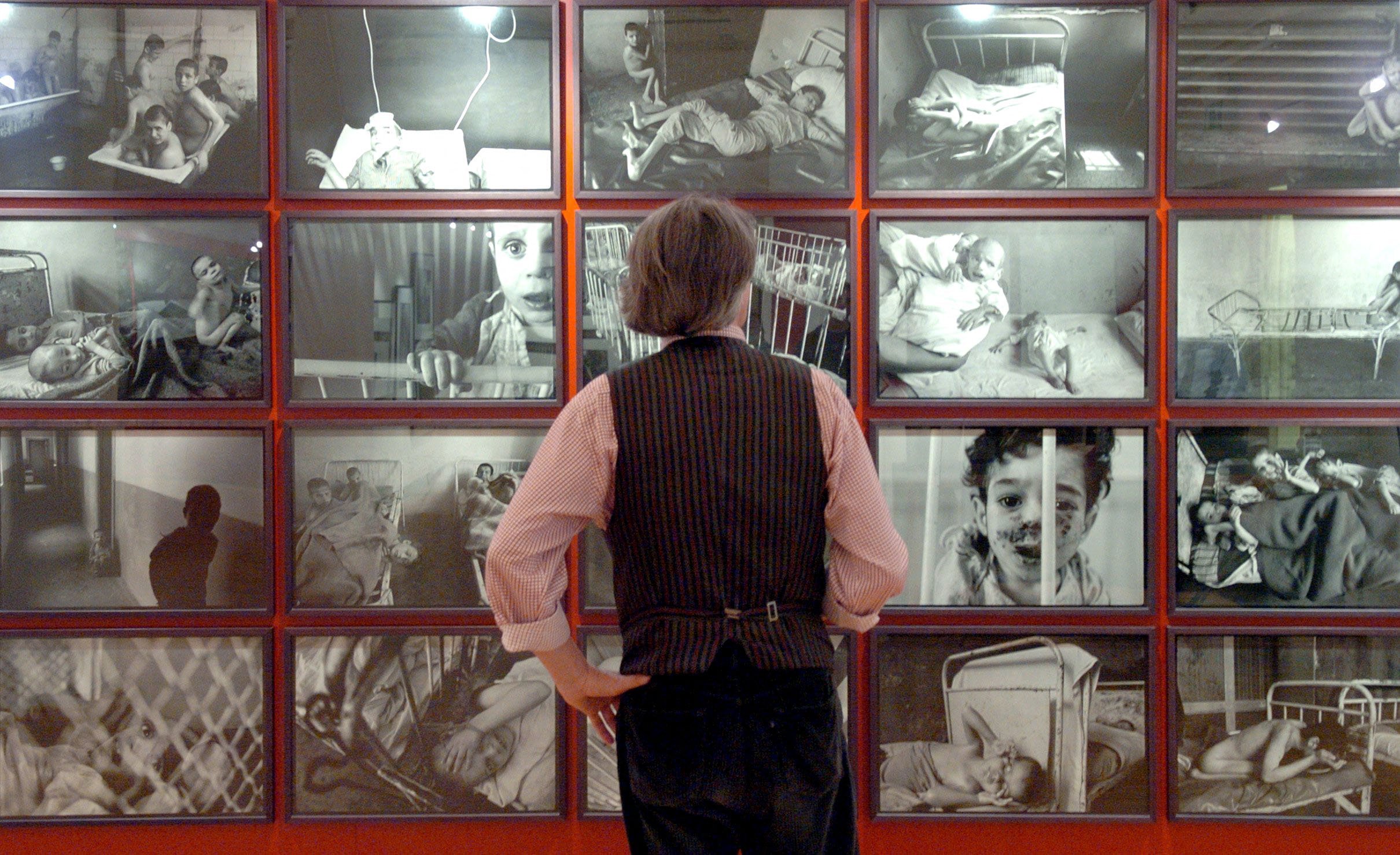
A visitor at a James Nachtwey’s exhibition, 2004. Photo: Peter Endig / dpa-Zentralbild / dpa Picture-Alliance via AFP
Mykhailo Palinchak: Many photos indeed get more value in time. First, social media are just one way to disseminate information. Second, Evgeny’s statement that photos are best published immediately holds true only for photographers like us. I mean, those who can deliver those pictures promptly. Meanwhile, most photographers I know who went to the frontline have never posted anything, although I know for sure they are taking pictures there. Everything will happen in due time.
Kateryna Mishchenko: Do you have any photos you have decided not to publish for now?
Evgeny Maloletka: Hardly any.
Mykhailo Palinchak: Nothing of importance. There was a ban on shooting checkpoints, but photographers did it anyway, and now you can actually publish those pictures. By virtue of our experience, we understand that some things will disappear later, and it’s crucial to document them now, even if we can’t publish the photos. For instance, the checkpoints have changed. They are now much more unified, although they were more vernacular and varied a lot early on.
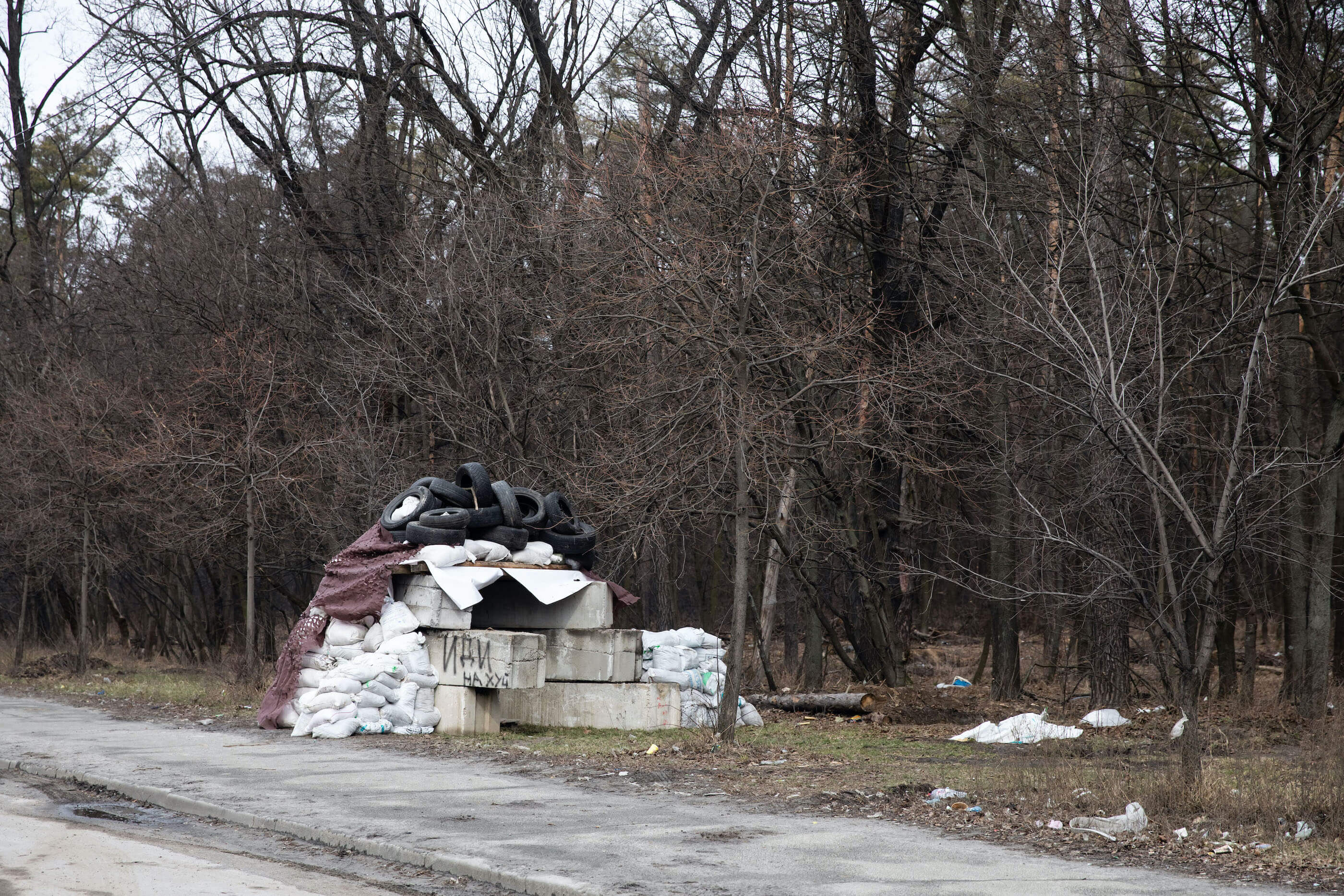
Kyiv, the 4th of March 2022. Photo: Mykhailo Palinchak
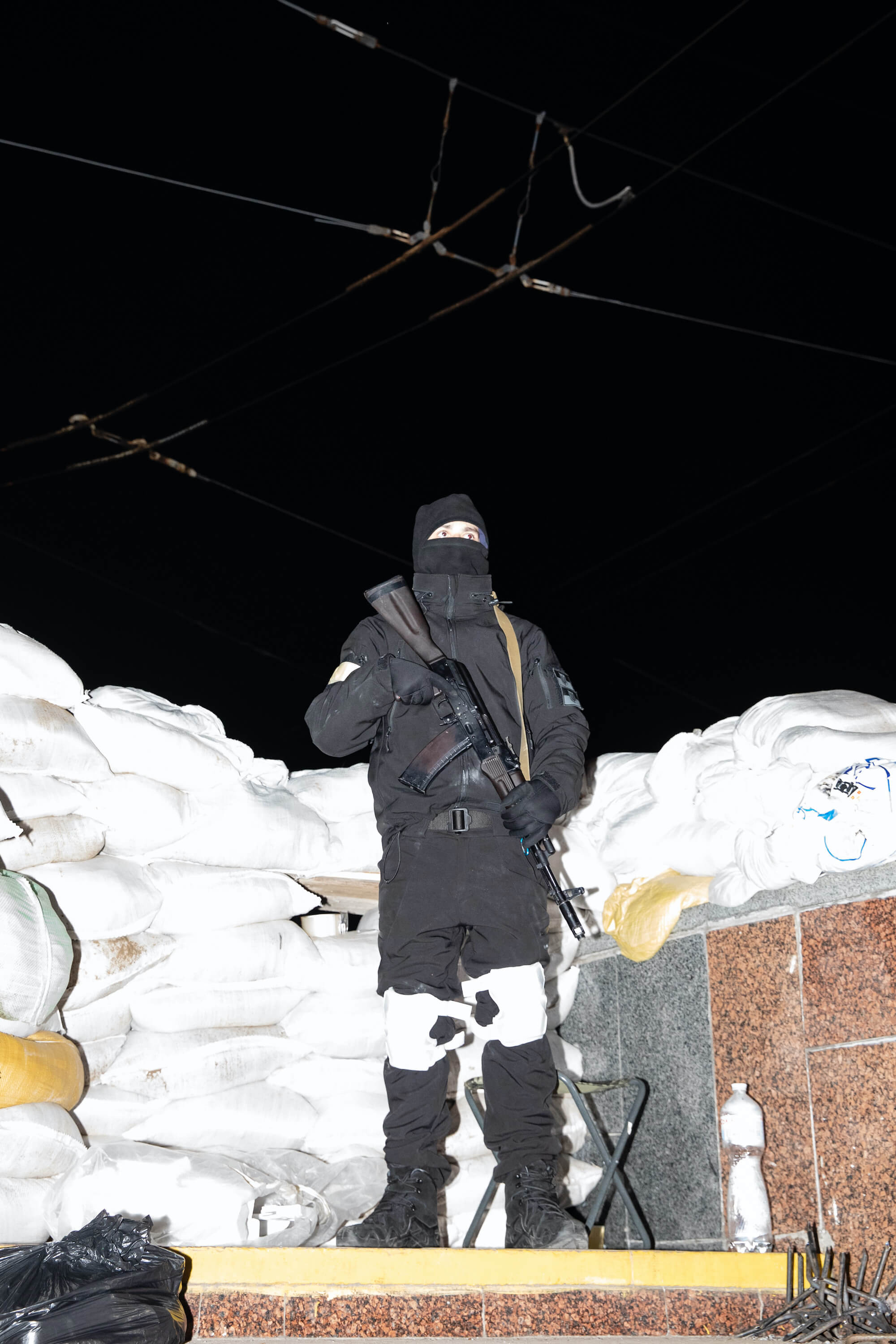
Kyiv, the 6th of March 2022. Photo: Mykhailo Palinchak
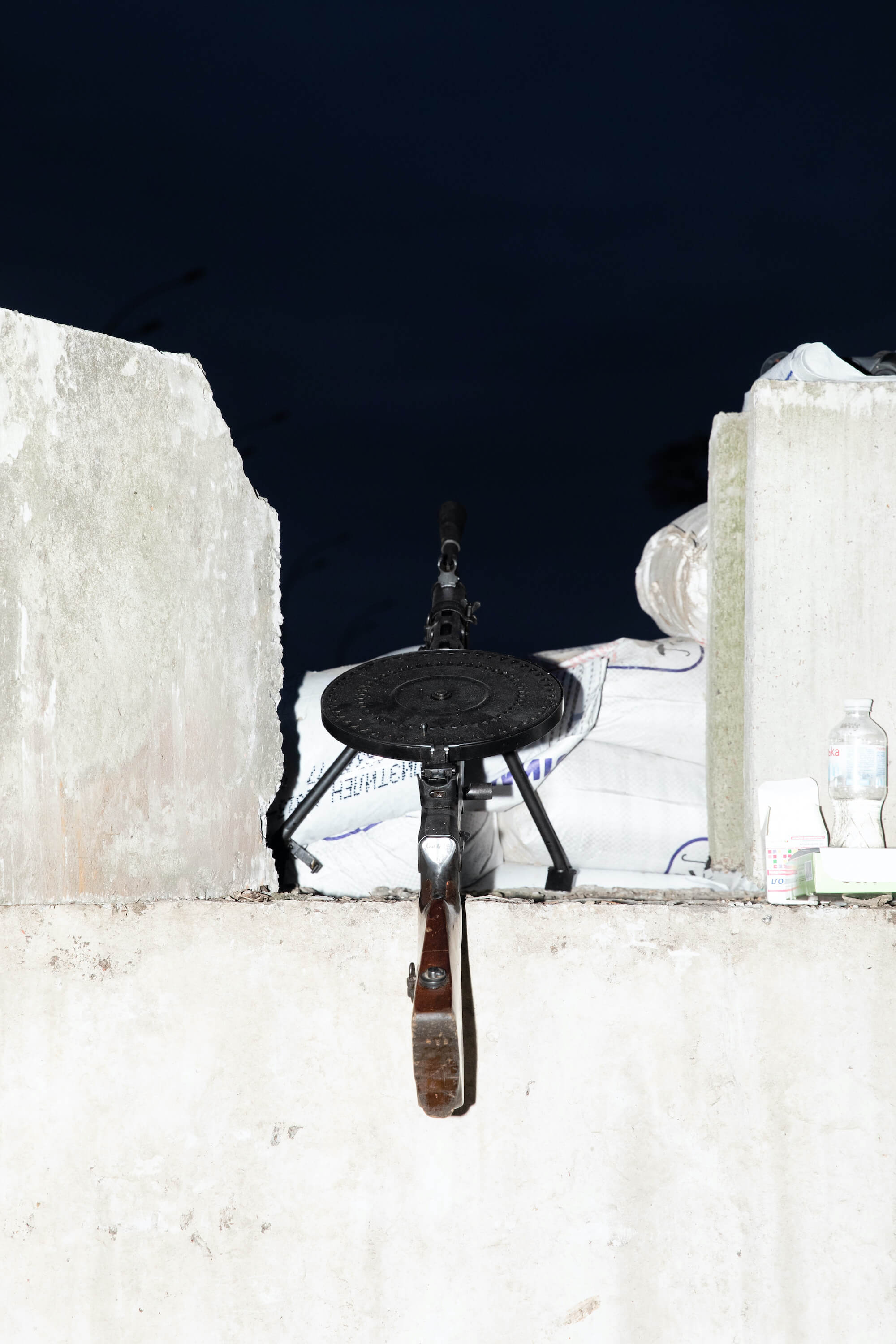
Kyiv, the 6th of March 2022. Photo: Mykhailo Palinchak
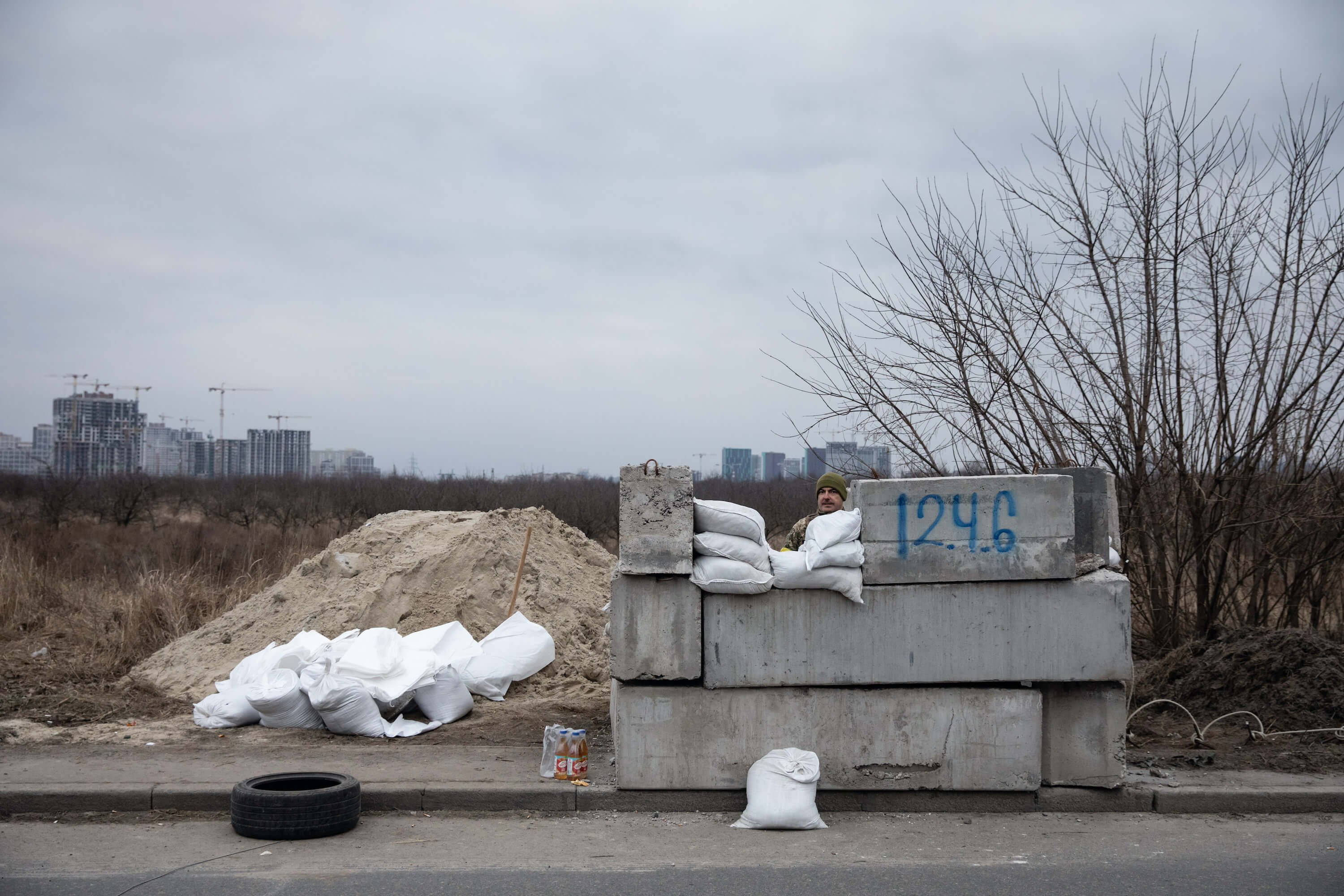
Kyiv, the 20th of March 2022. Photo: Mykhailo Palinchak
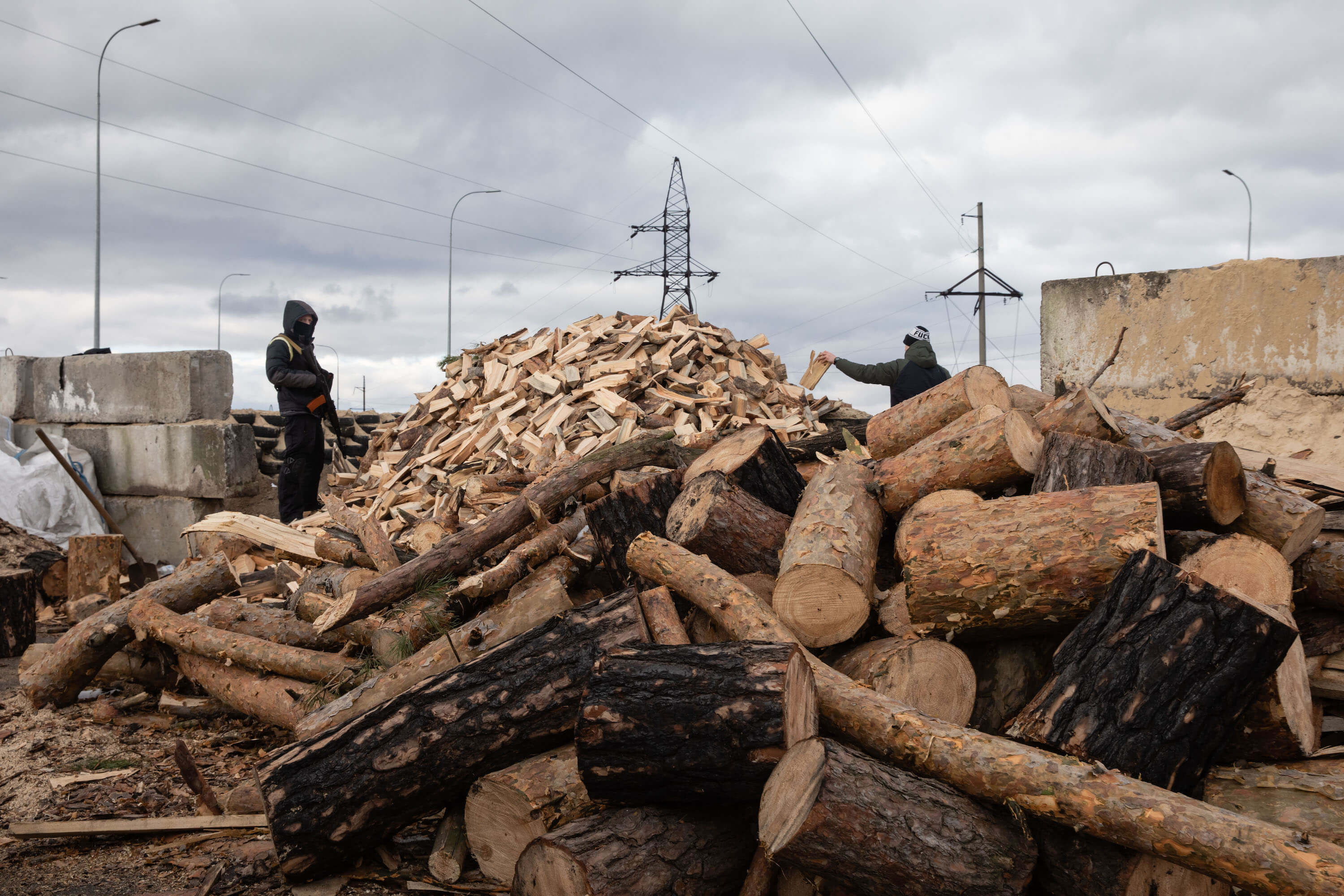
Kyiv, the 8th of March 2022. Photo: Mykhailo Palinchak
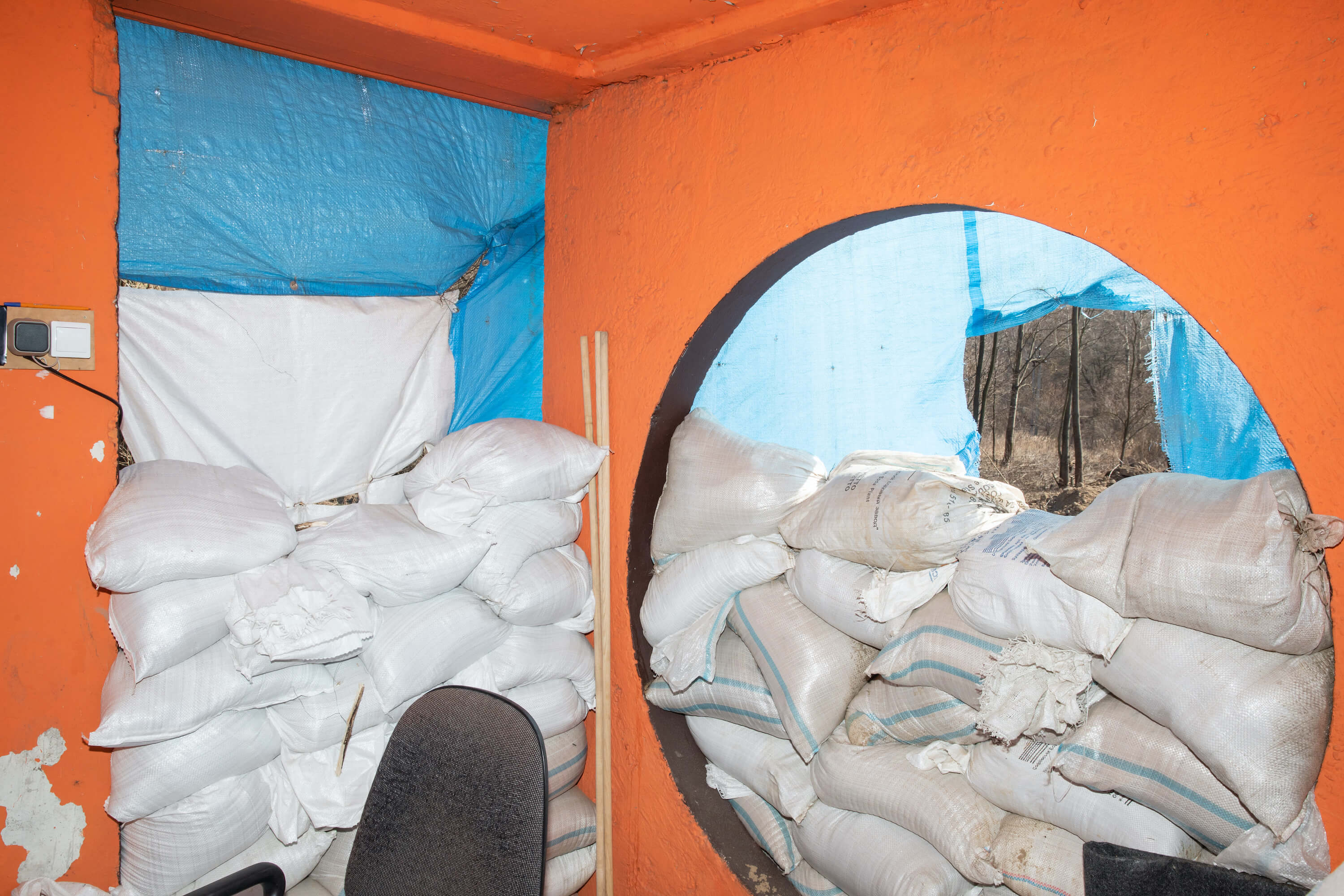
Kyiv, the 20th of March 2022. Photo: Mykhailo Palinchak
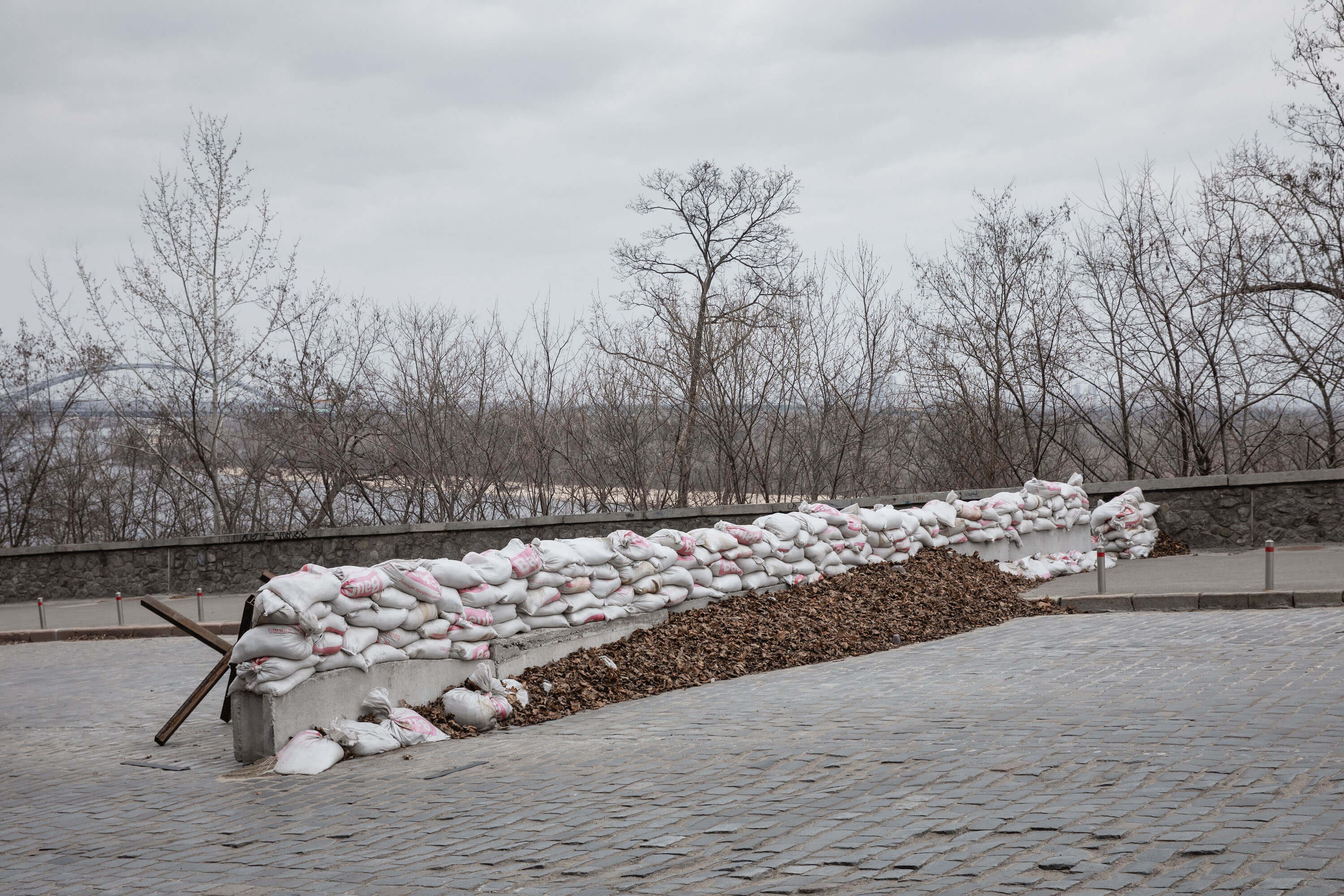
Kyiv, the 26th of March 2022. Photo: Mykhailo Palinchak
Even a year ago, experts said this war would be the best documented in human history, and they were right. Moreover, we are personally interested in this much more than during other wars.
Evgeny Maloletka: It all became possible because of the new technology. Also, the military started showing the things previously unseen — the videos in which they neutralize the enemy equipment and troops. That thing was banned. The Russo-Ukrainian War started a trend of showing those things. And other countries are picking it up.
Ivan Chernichkin: Such amounts of shocking content make people callous. And the longer it persists, the more shocking content it takes to reach their emotions.
Kateryna Mishchenko: It probably helps us feel safe because of the contrast between what we see in the pictures and the circumstances we view them under. Still, it gives us an understanding that there is another world that’s closer than we think.
Katerina Sergatskova: Have you ever felt conflicted, wanting to shoot something but risking being condemned for that? I know that you, Mykhailo, found yourself in such situations. At some point, you shared a photo of older women fighting for humanitarian supplies in Kharkiv. That photo caused outrage when it was published, as if those things were supposed to be kept under wraps.
Mykhailo Palinchak: I didn’t just share it. I submitted it to a German news outlet. You must be confident that your photo has to be seen. I was positive about that in that particular situation, although I don’t believe something has changed since it was published. Relief packages are probably still in short supply. And those who want to take three bags of supplies instead of two would still do it. I’ve never seen that photo of mine used by Russian propaganda in any way. However, when I took that picture, I thought, hey, that problem had never been articulated in society, and I need to broach this subject.
Evgeny Maloletka: It depends on what you put in the photo’s caption. Sometimes, it’s a tough decision to make. If a Ukrainian shell hits a school somewhere because Russian troops were stationed there, you must indicate that.
Ivan Chernichkin: We need to admit that metamodernism has already permeated documentary photography. Photographs don’t lie. It’s their authors who do. We are misled not by the images but by their captions.
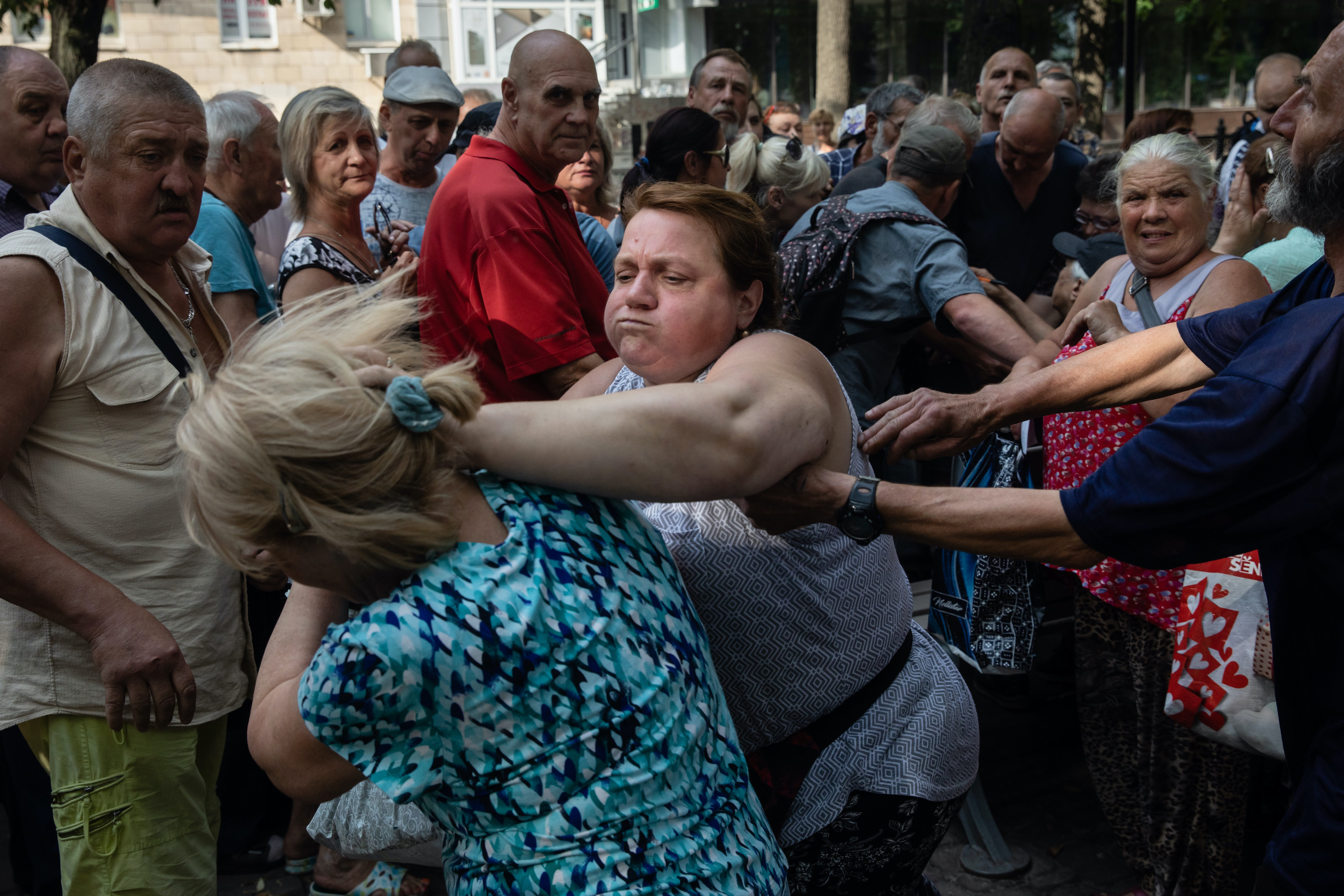
Kharkiv, the 1st of August 2022. Photo: Mykhailo Palinchak
Kateryna Mishchenko: Let me ask you the classic question for documentary photographers. Have you ever had to choose between taking a picture and helping someone?
Evgeny Maloletka: We are people first and journalists second. Often, someone needs your help, and you put your camera aside to provide it. Other times, there are enough people to handle that, and you can focus on your job. But I did find myself in situations where my help was required.
Mykhailo Palinchak: I have never had those. Usually, I work at locations where there is plenty of qualified help. Now that we discuss it, however, I remember the photo of the late Max Levin, in which he helps Irpin residents to evacuate. There were enough Territorial Defence Force troops there. Still, the reporter joined in to help people traverse the destroyed bridge.
Kateryna Mishchenko: Is there something you would never photograph, a taboo of some sort?
Ivan Chernichkin: For me, it’s rape.
Evgeny Maloletka: It’s execution or rape for me. However, it depends on the situation sometimes. In some cases, it might be necessary to take a picture like that so that it may later be used as proof.
Ivan Chernichkin: After a gas blast in one house, we came to the funeral of the girl it killed, and her family asked us not to take pictures of her. The photographers who were there all put away their cameras. If you know your photo will change nothing in the grand scheme of things, there is no sense in taking it in the first place. You are better off not aggravating the people and leaving them to their grief.
Mykhailo Palinchak: Western society increasingly relaxes censorship, I believe. As time goes on, we see photographers post increasingly more things that have never been published before. What’s more important is that even though you can publish almost anything, it gets increasingly hard to shoot. Those rules don’t apply in Ukraine yet, but taking pictures outdoors without a permit is tricky in Europe. If you publish a photo with passers-by and somebody recognizes themselves in it, they are free to sue you.
Ivan Chernichkin: Talking about the difference in the Western and Ukrainian photographers’ optics, I see that the views on the Ukrainian war are less empathic abroad. In some situations, it’s for the better — a view like that helps to look at reality without unnecessary emotions. However, having an empathic perspective is much more important in some cases. Photography like that might be worse from a technical standpoint while having a more powerful emotional impact on the viewer.
Kateryna Mishchenko: And then there is a matter of whether it’s ethical for a Ukrainian photographer to shoot for Russian media.
Mykhailo Palinchak: It’s unethical and unacceptable with unique exceptions, like the situation I found myself in two weeks ago when I had to photograph Russian prisoners of war for Meduza, a Russian news outlet. The shoot was agreed upon on all levels, from the Ministry of Justice of Ukraine to its direct participants. Why did I agree to do it, you might ask? Because it was the audience that had to see that information. It’s not as important if people in the USA, Belgium, and the Netherlands see how Russian prisoners of war are treated. The photographs were made specifically with Russian soldiers in mind. It took a long time for me to weigh all the pros and cons, but I agreed at the end of the day.
New and best
